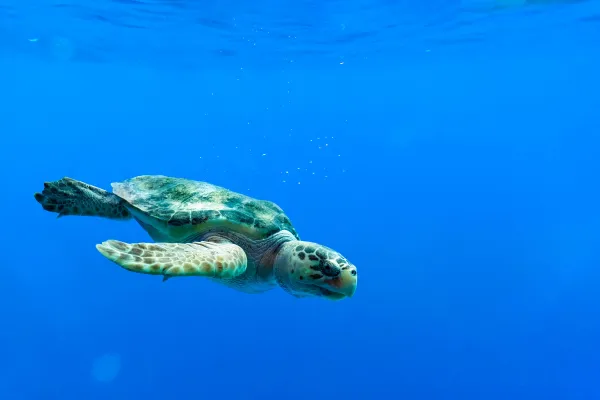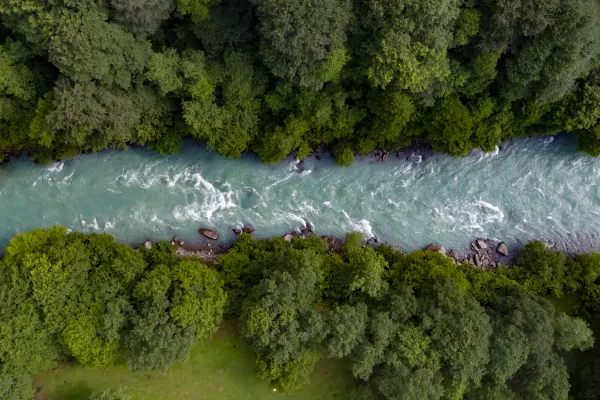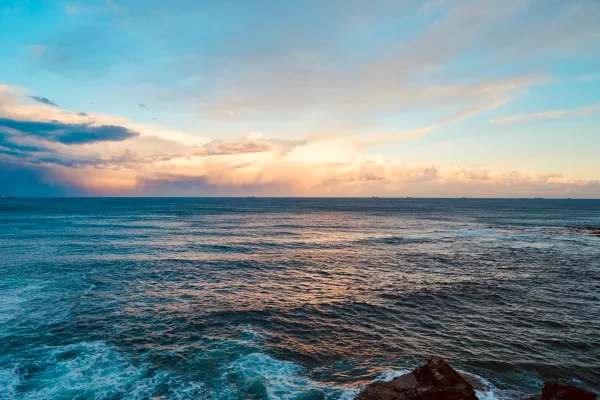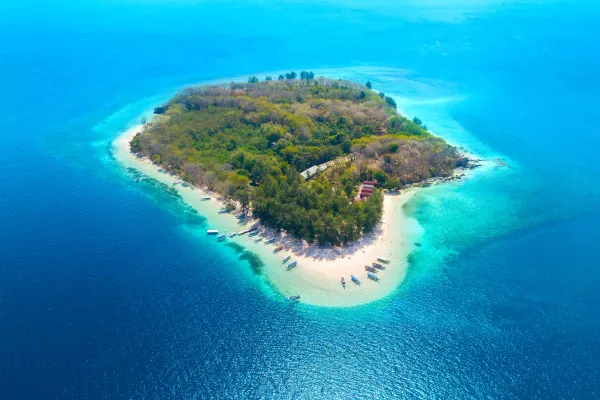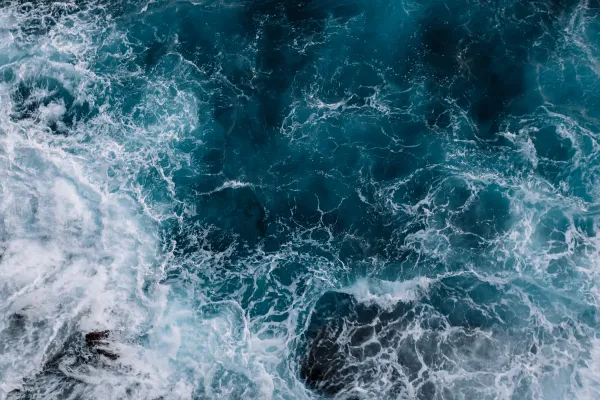Marine marvels of the Maldives
Famous for its magnificent marine life, the Maldives should be on the bucket lists of anybody with an interest in scuba diving or snorkelling.
The Maldives is a nation of islands in the Indian Ocean, consisting of 1,192 tiny islands that make up 26 atolls (rings of islands that subside beneath the water leaving a ring of coral reefs with an open lagoon in the middle).
The islands are picture-perfect tropical destinations home to an array of wonderful wildlife, including flying foxes and some beautiful lizards. But it is the wildlife residing in the surrounding crystal clear waters that makes the Maldives such a special wildlife spot.

A hotspot for marine life
Thanks to its position in the middle of the Indian Ocean, aquatic life around the Maldives is incredibly biodiverse. Among other marine life, there are over 1,000 species of fish (including sharks), five species of turtle, 21 species of whales and dolphins, and 180 species of corals. The coral reef systems in the Maldives are the seventh biggest on Earth, covering almost 9,000 square kilometres.
There are hundreds of marine species to spot on a visit to the Maldives, and thanks to the beautifully clear waters, many can be experienced by both snorkelling and scuba diving. To see the greatest range of biodiversity, it might be best to move between the islands. Lhaviyani Atoll, for example, is famous for its green sea turtles, while Ari Atoll is the place to go to see whale sharks, and Baa Atoll for manta rays.
1. Whale sharks
The Maldives is one of the few places where visitors can see whale sharks all year round. These gentle giants are the largest fish in the oceans and swimming with them is guaranteed to be an unforgettable experience. The South Ari Atoll is the ideal place to see whale sharks.
Here, holidaymakers can not only observe the impressive whale sharks, but also explore the beautiful underwater world of the Maldives with its colourful coral reefs and diverse marine life.

2. Manta rays
Manta rays can be spotted in the waters around the Maldives depending on the time of year. Visitors to the breathtaking Hanifaru Bay in Baa Atoll are rewarded with the unique experience of swimming alongside schools of manta rays. An unusual phenomenon is that the manta rays congregate in Hanifaru Bay all year round to feed on the rich zooplankton populations of the region.
Hanifaru Bay also offers opportunities to see other fascinating marine life such as whale sharks and various coral species, making it a paradise for snorkellers and divers.
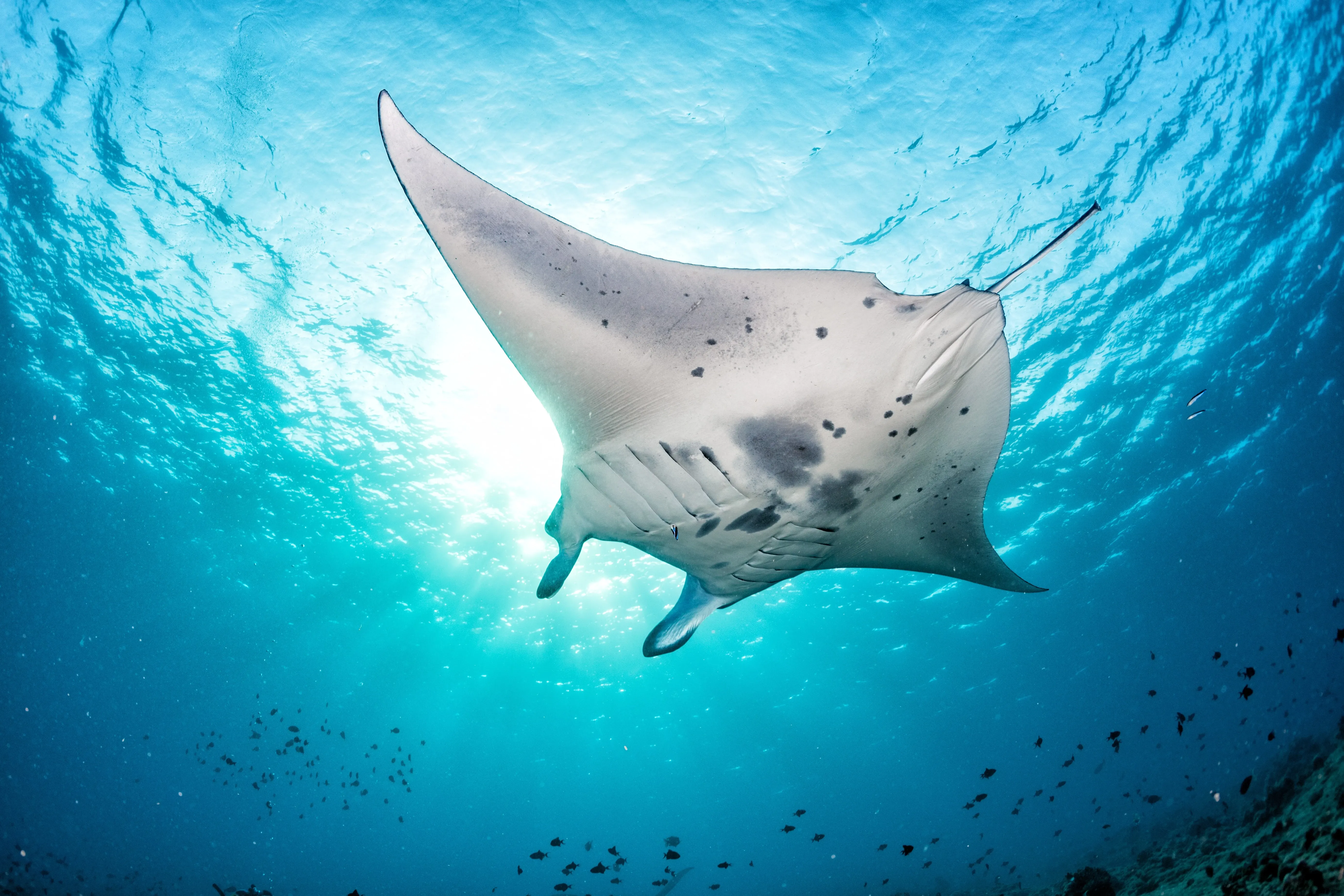
3. Sea turtles
No trip to the Maldives would be complete without spotting a sea turtle or two. Species that can be seen in the surrounding waters include green, leatherback, loggerhead, hawksbill and olive ridley turtles. Most sea turtle species are endangered and, observed from a distance, the magnificent animals will surely be a highlight of snorkelling trips in the Maldives.
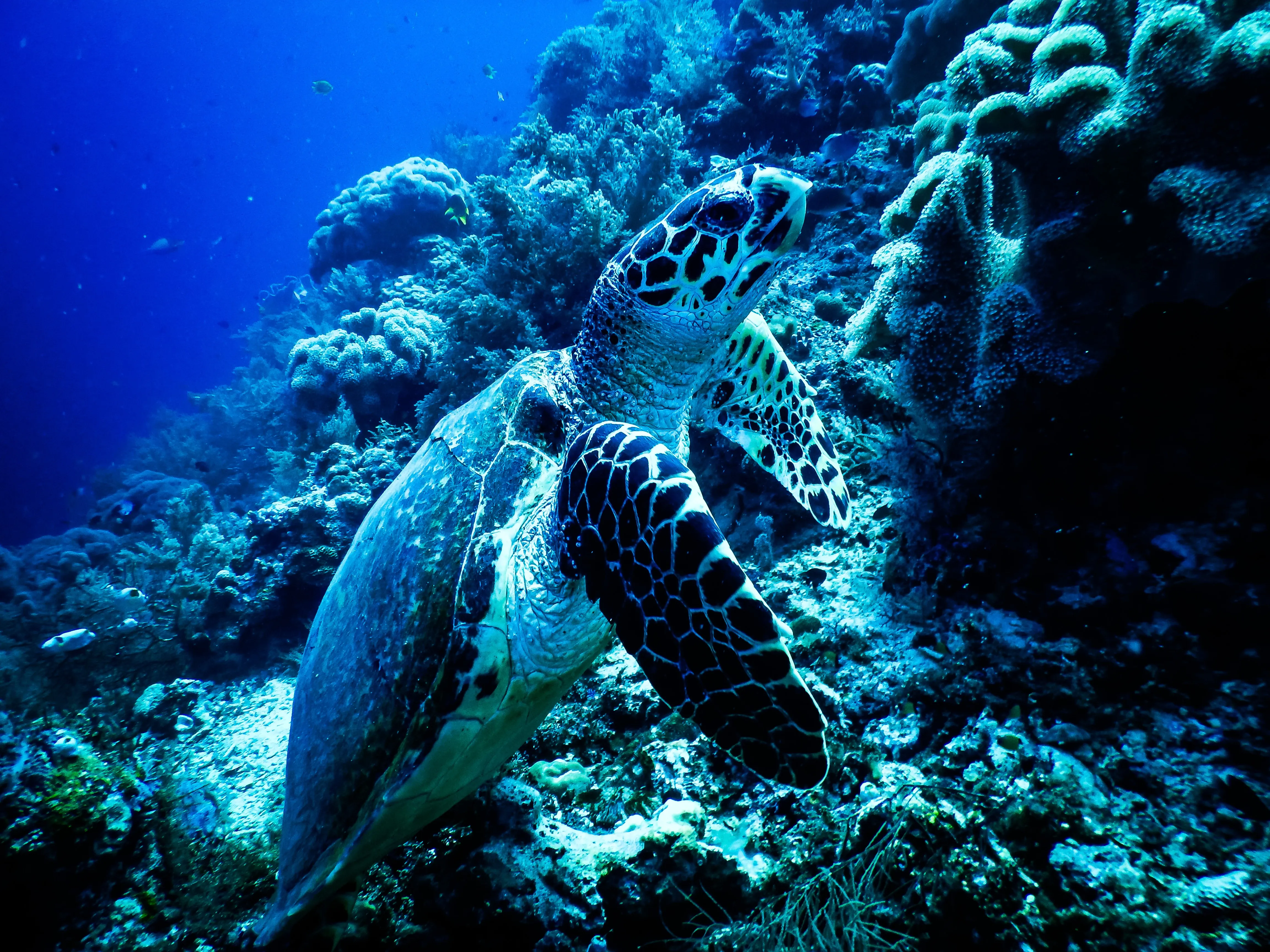
4. Sharks
An incredible 26 shark species have been counted in the Maldives, including blacktip, whitetip and grey reef sharks. Visitors can also see hammerheads and tiger sharks at certain shark diving spots! (Don't worry - no shark attacks have been reported in the country yet!)
The variety and frequency of shark encounters make the Maldives a prime destination for divers who want to explore the stunning underwater world and observe these majestic predators in their natural habitat.

5. Fish
A great variety of beautiful, colourful fish inhabit the reefs around the Maldives. On any snorkelling trip, you will probably see too many species to count (there are more than 2,000 fish species in the area).
Some of the fish you might want to tick off your list in the Maldives include guitarfish, butterfly fish, barracudas and porcupine fish. Moray eels are common to the region too - just be sure to keep your distance to avoid those sharp teeth!
6. Dolphins
It isn’t uncommon to spot a pod of dolphins frolicking in the ocean around the Maldives, either. The most common species is the spinner dolphin; these delightful creatures can often be seen swimming and leaping in the water at sunset. There are around 20 species of dolphin that visit the Maldives waters, including bottlenose, risso’s, spotted and striped dolphins.
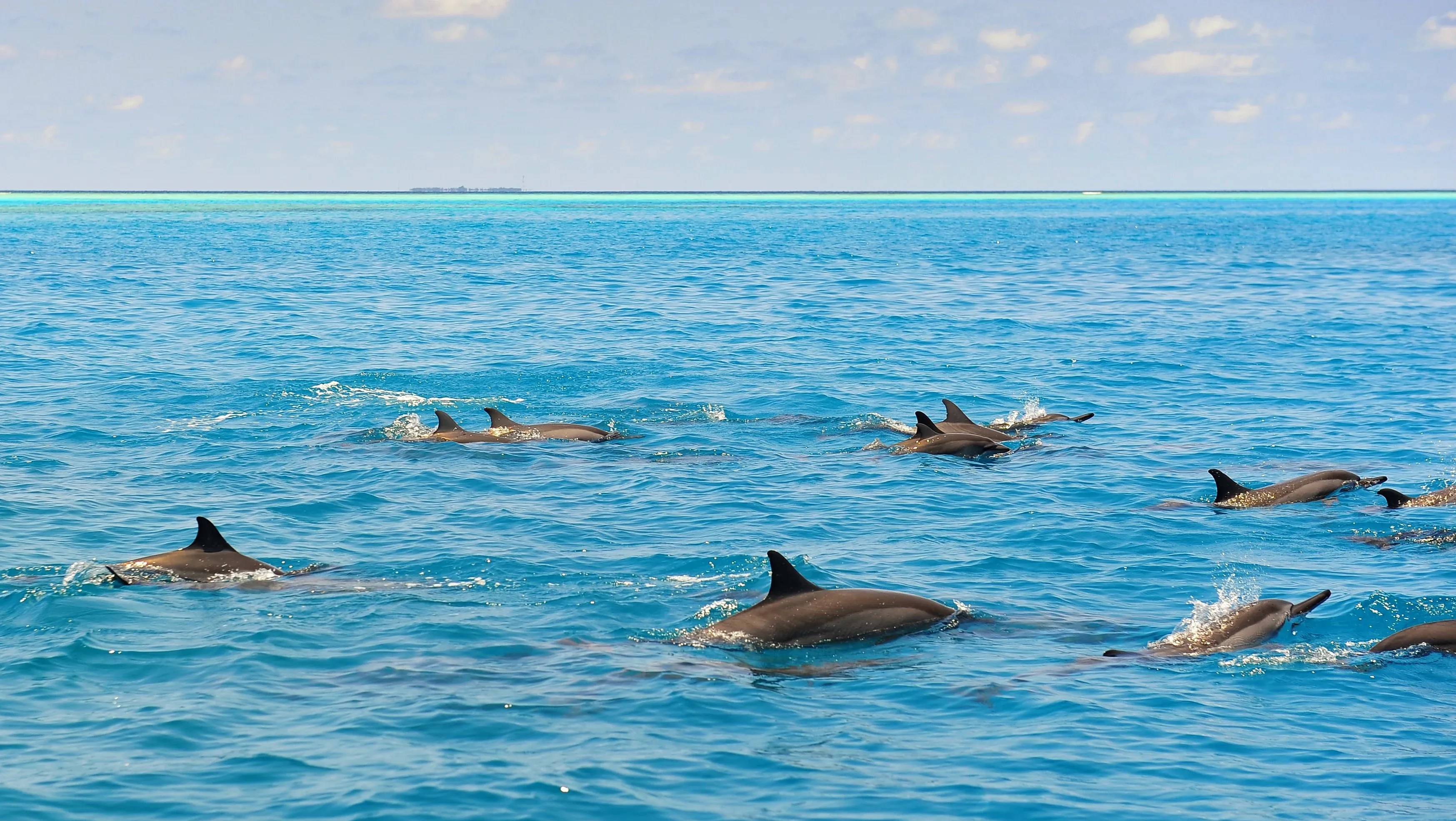
7. Octopuses
Octopuses are elusive creatures: they are masters of camouflage, usually hunt at night and tend to be wary of humans. But if you’re going to spot an octopus anywhere, the Maldives might be one of the best regions to go searching. The Maldives octopus is an impressive 60cm long; they are usually still during the daytime, but can be identified among the seafloor with keen eyes.

Conservation in the Maldives
Marine ecosystems in the Maldives are, like many marine ecosystems around the world, threatened by climate change and coral bleaching, as well as side effects of tourism and overexploitation of marine species. Pollution is another significant threat, particularly with the use of harmful pesticides and fertilisers in farming, uncontrolled waste disposal and untreated sewage.
Measures are in place to protect the extraordinary marine life in the Maldives and considerable progress has been made. For example, 44 protected areas have been attributed, covering a total of 430,000 hectares of marine area. A 10-year moratorium is in place to conserve turtles and bans have been implemented on the exploitation of some marine animals that are likely to be threatened or endangered.
Prospective conservationists can contribute to the protection of whale sharks in the Maldives by volunteering, for example. Working alongside a team of international volunteers, the program offers the unforgettable experience of living on board a research vessel in the Indian Ocean, swimming with whale sharks, and actively contributing to the conservation of this stunning species.
Protecting those marvels - time's ticking
Three-quarters of land in the Maldives is less than 1m above sea level at high tides; if climate change continues to increase sea levels at expected rates, the Maldives will be underwater before long.
There is no better time to go and experience the beautiful and unique marine ecosystems around the archipelago. Snorkelling and diving trips in the Maldives promise sightings of a great diversity of breathtaking species.
Source references:
Convention on Biological Diversity

